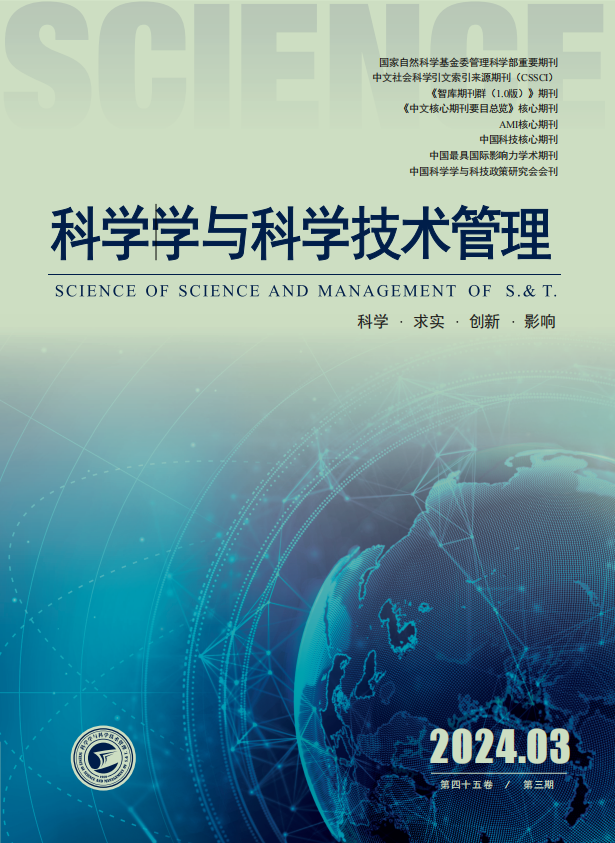|
|
Does Intellectual Property Protection Promote the Improvement of the Quality of Enterprise Innovation? Quasi-Natural Experiments from National Intellectual Property Demonstration Cities#br#
#br#
LIANG Ran , WEN Xueguo , ZHU Siwei , XIA Yiqun
2024, 45(03):
3-20.
Innovation is the core driver of leading development, and promoting high-quality economic development
must elevate the issue of IPR protection to a national strategic level. As a typical combination of IPR protection policies, the
pilot policy of model cities for IPR protection makes up for the shortcomings of the IPR protection mechanism, stimulates
the innovation vitality of enterprises, and accelerates the transformation of scientific and technological achievements. Observing
Chinese A-share listed enterprises from 2007 to 2020, the asymptotic DID model is constructed to examine the impact
of IPR protection on enterprise innovation quality in a quasi-natural experiment with IPR demonstration cities, which
effectively avoids the interference of other influencing factors on the estimation results. For the measurement of enterprise
innovation quality, patent cited data and patent knowledge width are used as proxy variables for enterprise innovation quality,
which effectively reduces the error of indirectly measuring innovation quality using patent quantity measurement.
The study results show that, on the one hand, the pilot policy of IPR demonstration cities has a significant positive
impact on the innovation quality of enterprises, and the estimation results using the OLS model and FE model are non-differential.
The event study method results indicate that the impact of the pilot policy of IP demonstration cities on the quality
of corporate innovation satisfies the parallel trend hypothesis, and the impact of the pilot policy on the quality of corporate
innovation shows an increasing trend from year to year. The main regression results remain significantly positive after
a series of robustness tests such as the placebo test, instrumental variables, replacing the explanatory variables, excluding
the interference of other policies, and controlling for the time trend term. On the other hand, based on the analysis of institutional
change theory and externality theory, it is found that IPR protection has a positive impact on the quality of enterprise
innovation mainly through two transmission paths, namely, stimulating enterprises' substantive technological innovation
and optimizing resource allocation efficiency. First, the pilot policy of intellectual property protection provides enterprises
with an excellent institutional environment and perfect judicial protection, which effectively stimulates enterprises
to launch substantive technological innovation and positively impacts the quality of enterprise innovation. Second, the pilot
policy of intellectual property protection provides an excellent macro environment for enterprises to introduce
high-technology talents and high-technology-rich capital, which helps enterprises adjust the allocation efficiency of innovation
factors and positively impacts the quality of innovation. In addition, the heterogeneity analysis finds that the nature of
firm ownership and the administrative level of the city have heterogeneous effects on the quality of innovation of firms affected
by IPR protection. First, from the perspective of enterprise ownership, the impact effect of IPR protection policy is
more beneficial to improve the technological innovation quality of non-state-owned enterprises compared to state-owned
enterprises; second, from the perspective of heterogeneity of administrative level and function of cities, the policy only improves
the innovation quality of enterprises in cities with high administrative level compared to enterprises in general cities.
Based on this, implementing the construction of a robust IP strategy, promoting high-quality development of technological
innovation, and forming a high-quality IP governance system need to pay attention not only to the driving role of
institutional policies but also to the stimulating effect of incentive policies on the endogenous motivation of enterprises for
high-quality development. Finally, there are still points for further research on this topic due to the space limitation. On
the one hand, the study on the path mechanism of intellectual property protection inhibiting enterprise innovation has not
been empirically tested. On the other hand, there is a lack of examining the impact of IPR protection on enterprise innovation
quality based on the perspective of the knowledge spillover effect. Therefore, examining the research on the potential
inhibitory paths of IPR protection on enterprise technological innovation and the relationship between IPR protection and
enterprise innovation activities based on the technology spillover effect is an important direction to focus on in the future.
References |
Related Articles |
Metrics
|

